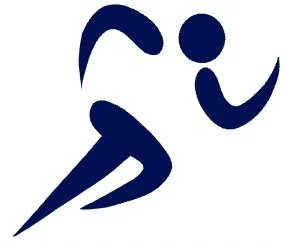Frequently asked questions
What types of conditions do chiropractors treat?
Chiropractors treat a wide range of conditions of the musculoskeletal system. This includes conditions that are related to the muscles, joints and nerves in the body. While chiropractors are well known for treating conditions related to the spine, they have the knowledge and expertise to treat conditions of any muscle or joint in the body. This includes:
Low back pain
Neck pain
Whiplash
Headaches
Osteoarthritis (hips, knees, hands)
Sports injuries
Tendonitis
Rotator cuff dysfunction
Carpal tunnel syndrome
Post-surgical rehabilitation
Repetitive strain/ sprain injuries
Nerve entrapments
Plantar fasciitis
Shin splits
And many more!
What can I expect from my first chiropractic appointment?
During your first chiropractic appointment, you can expect that you will spend approximately 60 minutes going through a thorough history and physical exam, being given a diagnoses, discussing a plan of management, and in some cases you can receive treatment on the first day.
During the history you will be asked about your presenting complaint, your previous medical history, and questions about your occupation, lifestyle and any goals that you have for treatment. This will help your chiropractor get a complete picture of your presenting complaint, you as a person, and how this condition is affecting your life.
The physical exam is where your chiropractor is going to take you through a range of different movements, testing your muscles and joints, and doing orthopaedic tests to try and pin point the exact cause of your complaint. This includes things like range of motion, muscle strength and neurological tests.
After the physical exam, your chiropractor will present their Report of Findings (ROF). In the ROF, they will go over what they found in the history and physical, discuss any additional testing they believe may be relevant, give you a diagnosis, and then have a discussion with you about their proposed plan of management. This likely includes some of chiropractic adjustments, soft tissue therapy, rehabilitation exercises and stretches and anything else they see fit.
What is a chiropractic adjustment?
A chiropractic adjustment is a technique that is used to increase the range of motion of a joint. It is usually performed in the spine, but any joint in the body can be manipulated using chiropractic techniques.
During the adjustment, the joint is taken to its end range of motion. Once at the end range, a high-velocity, low amplitude thrust is delivered to momentarily take the joint past its end range of motion. This is where the cavitation or “pop” may occur. The cavitation does not have to occur in order for the adjustment to be successful, but it is commonly a result of the procedure. The cavitation is simply the formation of an air bubble within the joint, similar to the sound made if you were to pull a suction cup off the the side of a bathtub. It is not bones cracking, bones rubbing together and it will not cause arthritis.
What kind of education do chiropractors have?
Chiropractors in Canada typically obtain a 4-year undergraduate degree before attending chiropractic college. Chiropractic college is a 4-year program akin to the “medical school” equivalent for chiropractors. During this time, they study a variety of courses including anatomy, physiology, biomechanics, biochemistry, psychology, orthopaedics and radiology to name a few. They also have a 12-month clinical internship in their 4th year where they perform patient care under the supervision of a practicing chiropractor in a variety of settings around the Greater Toronto Area. Upon graduation chiropractors graduate with a Doctor of Chiropractic degree. Chiropractors can further complete a residency degree in clinical sciences, diagnostic imaging, sports sciences or health policy management and evaluation.
How much does a chiropractor cost? Is it covered by OHIP?
Chiropractic fees vary from clinic to clinic, but are usually in the range of $100-$140 for the initial assessment, and between $50-$80 per treatment. However, this may vary widely from clinic to clinic depending on the amount of time of the visit and that clinics fee structure.
Chiropractic care is currently not covered under OHIP, but it may be covered under your private medical insurance through your employer. You can also pay directly, you do not have to have an OHIP card or private insurance to see a chiropractor.
How do I book an appointment?
To book an appointment with Dr. Steven Murray, you can click the “book online now” button below and fill out “Dr. Steven Murray” in the “who were you referred to” section, or contact Back in Balance Clinic directly at (416) 660-9932 and ask for Dr. Steven Murray.



